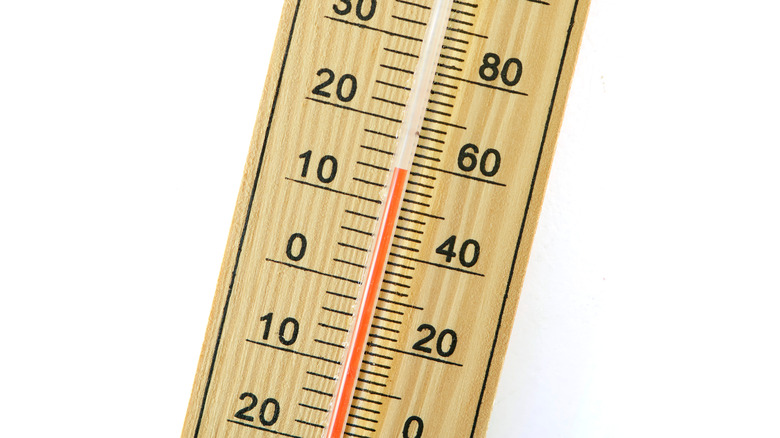Why Temperature Is So Important When Serving Cheese
There is no doubt there are plenty of people who remember the ad campaign of the late '90s and early 2000s that hailed "the power of cheese." While the campaign started out with "beholding" that power, later ads moved to expressing the satisfaction of the power of cheese with a simple "ahh" before the statement (via Adweek).
Regardless of the linguistic changes, who can't agree that cheese most certainly possesses some serious power? In fact, some (such as New York City Mayor Eric Adams) suggest that cheese is so powerful that it may have the potential to be addictive, citing a 2015 University of Michigan study that resulted in a lot of hyperbolic headlines paralleling cheese and narcotics.
Regardless of the cheesy controversies surrounding the dairy delight, there's little less satisfying than cheese flavor that falls flat. One of the top ways to make a misstep when serving cheese is to eat the snack fresh from the fridge, per Serious Eats.
Take time to achieve the perfect cheese temperature
Whether you're constructing a creative cheese and charcuterie board or assembling an array of unique cheeses, the best way to serve them successfully is to allow time for the cheese to reach an optimal temperature.
Serving temperature is crucial because cheese tastes better when it's closer to body temperature, according to Kitchn. When cheese remains chilly, tasting its flavor is a challenge. As it becomes closer to room temperature, the fats that house the nuanced flavors warm and aromas and flavors begin to release.
Additionally, as cheeses reach room temperature, textures change from solidly firm to a more natural state of soft creaminess resulting in a more multi-sensory tasting experience. From achieving more pleasant mouthfeel to increasing aromas and elevating flavor, allowing cheese to rest after being in the refrigerator transforms the simple act of snacking into an experience.
The Academy of Cheese recommends removing cheese from the fridge approximately one hour before serving and allowing it to rest on a plate or platter. It also suggests only preparing as much as you intend to consume since frequent temperature changes can quickly degrade quality. Of course, if you wind up with some leftover cheese (or rinds) that you need to repurpose, you could certainly put them to good use in a glorious mac and cheese or any number of soups. Most recipes incorporating cheesy goodness will benefit from the addition of your surviving snacks after a night of Netflix and cheese.

